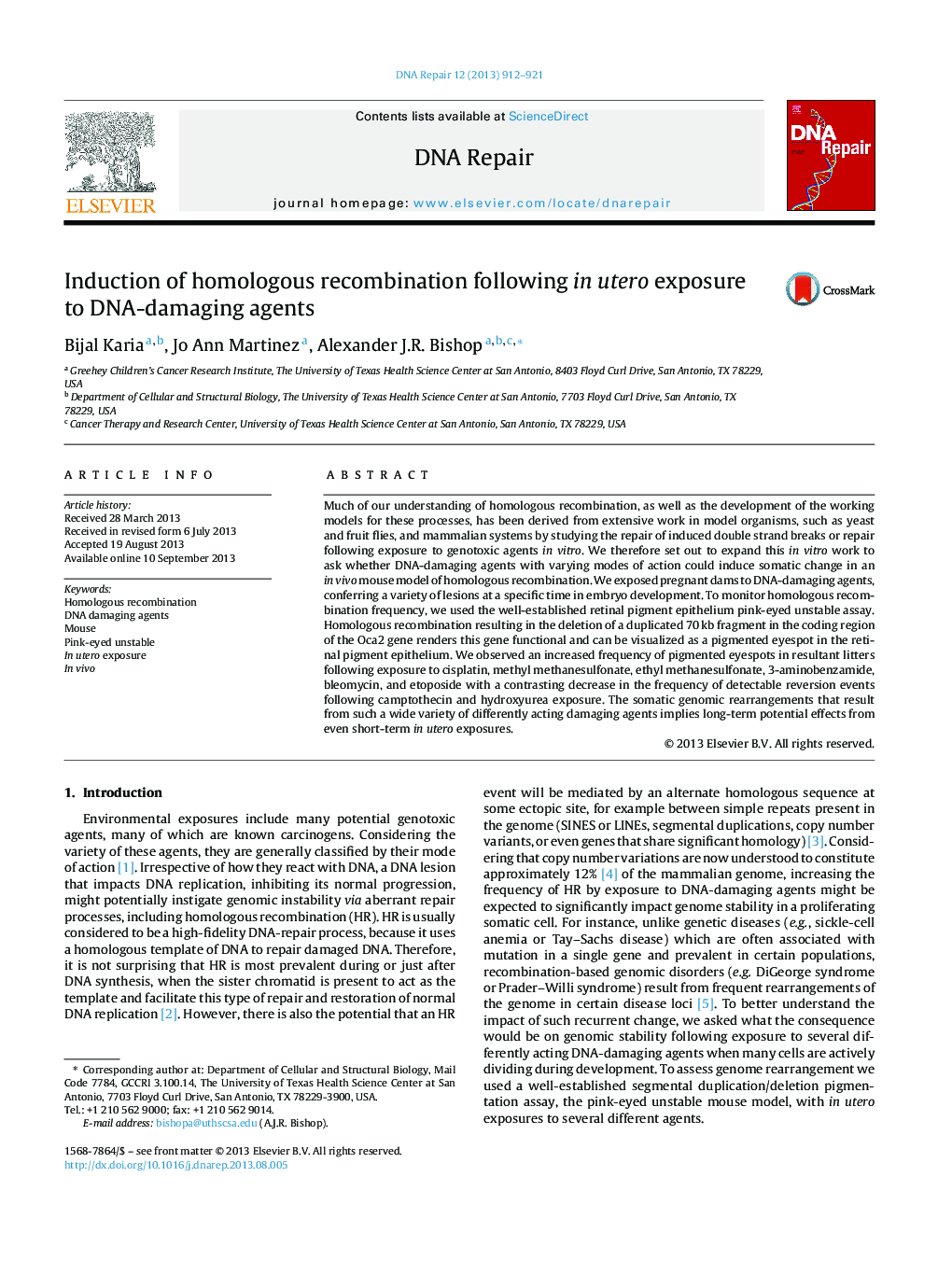| کد مقاله | کد نشریه | سال انتشار | مقاله انگلیسی | نسخه تمام متن |
|---|---|---|---|---|
| 1980190 | 1061828 | 2013 | 10 صفحه PDF | دانلود رایگان |

• HR repairs a variety of DNA lesions as measured by the pun assay.
• In utero exposure to cisplatin and alkylation damage increased HR frequency.
• In utero exposure to PARP inhibition and bleomycin increased HR frequency.
• In utero exposure to etoposide increased HR frequency.
• In utero exposure to camptothecin and HU decreased HR frequency.
Much of our understanding of homologous recombination, as well as the development of the working models for these processes, has been derived from extensive work in model organisms, such as yeast and fruit flies, and mammalian systems by studying the repair of induced double strand breaks or repair following exposure to genotoxic agents in vitro. We therefore set out to expand this in vitro work to ask whether DNA-damaging agents with varying modes of action could induce somatic change in an in vivo mouse model of homologous recombination. We exposed pregnant dams to DNA-damaging agents, conferring a variety of lesions at a specific time in embryo development. To monitor homologous recombination frequency, we used the well-established retinal pigment epithelium pink-eyed unstable assay. Homologous recombination resulting in the deletion of a duplicated 70 kb fragment in the coding region of the Oca2 gene renders this gene functional and can be visualized as a pigmented eyespot in the retinal pigment epithelium. We observed an increased frequency of pigmented eyespots in resultant litters following exposure to cisplatin, methyl methanesulfonate, ethyl methanesulfonate, 3-aminobenzamide, bleomycin, and etoposide with a contrasting decrease in the frequency of detectable reversion events following camptothecin and hydroxyurea exposure. The somatic genomic rearrangements that result from such a wide variety of differently acting damaging agents implies long-term potential effects from even short-term in utero exposures.
Journal: DNA Repair - Volume 12, Issue 11, November 2013, Pages 912–921